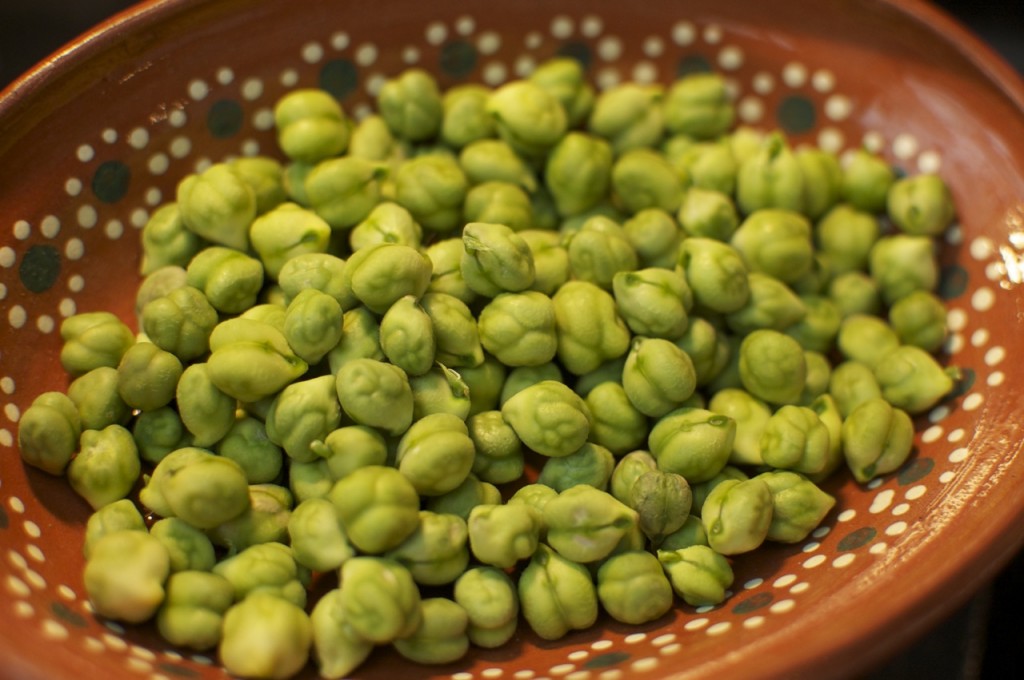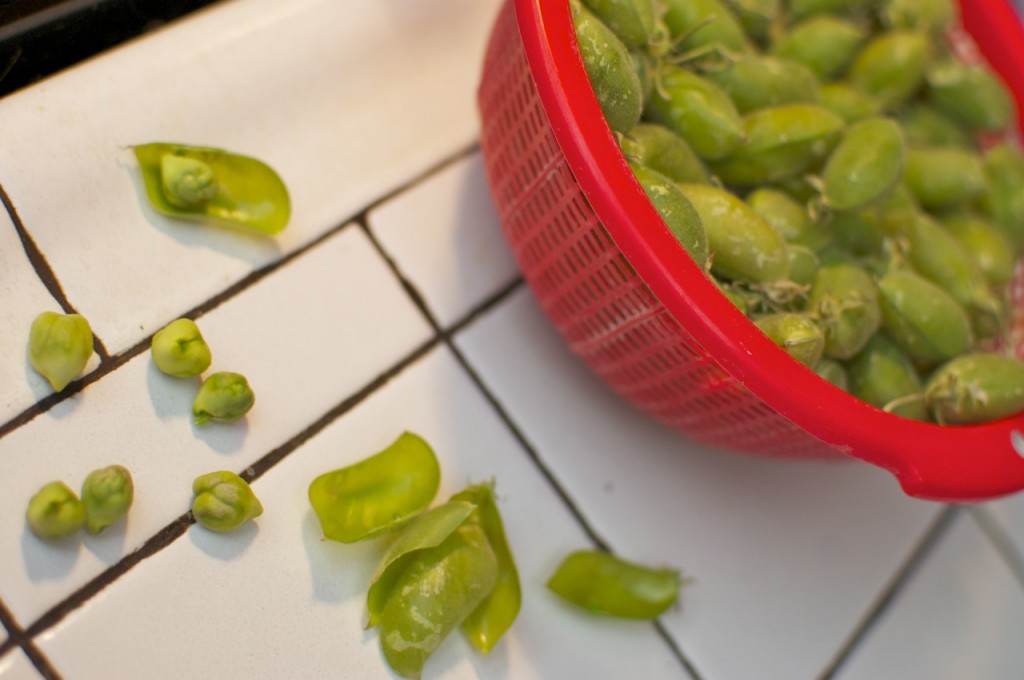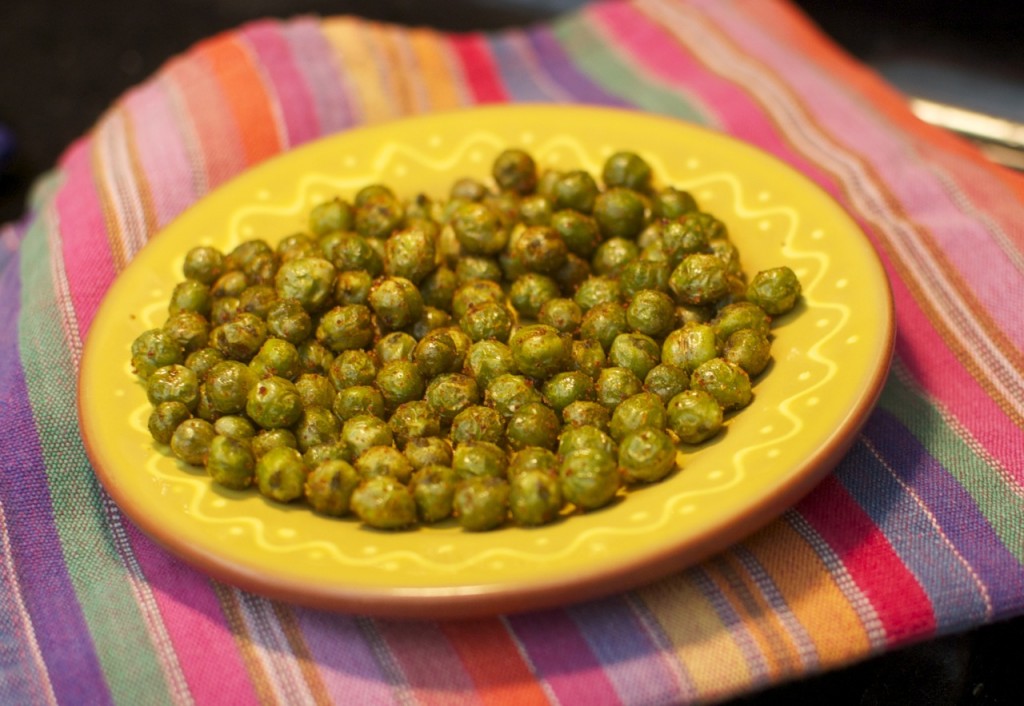When it comes to garbanzo beans, a.k.a. chickpeas, I’ve always been like your average city kid to milk. “It comes from the grocery,” the child is likely to respond when you ask, “Where does cow juice come from?” Even though I know garbanzo beans are grown somewhere, somehow, my experience with them has always required either a can opener or long soak.
Sad to say, the exposure most people in middle America have to garbanzo beans has been to find them raw on a salad bar, where they languish in abject dullness. Garbanzos are marvelously versatile, but basic northern European stock in America (that’s me!) has never really known what to do with them. It took people from other hemispheres and climates to tell us that they’re good in hummus, falafel, papadum and the like. They’re high in protein and fiber, low in cholesterol and fat, and a great choice if you’re trying to wean yourself off animal sources of protein.
I’m betting that most of us have never even seen fresh garbanzo beans. I hadn’t until recently, when I was browsing in a Mexican market in East Los Angeles. Casting a curious eye toward the mound of unfamiliar short, fat pods in the produce department, I wasn’t sure what I was looking at, so I broke one open and taa-daa! There was a soft little green garbanzo inside. As is my custom when I make a discovery like this, I scooped some into a bag and brought them home to play with.
While they shell easily, you get only one or two beans per pod, so it takes awhile to amass an amount sufficient for a meal–as it turned out, I’d bought only enough for a snack. It’s best to buy a bunch and get together with friends or family to do your shelling, like we used to do when I was a kid back home with bushel baskets full of black-eyed peas. Shelling is best done socially, for the time passes quickly and the job gets done as you catch up on all the news and gossip. Many hands make light work, as the ol’ saying goes.
I simmered these fresh garbanzos in a little salted water for about 15 minutes, drained them, and then sautéed them in some olive oil and tossed them with a Mexican seasoning of lemon, garlic and cayenne. Of course you can use whatever seasoning you like. We munched them all away before there was time to plan anything else for them. But they’d have been good tossed over salad or pasta, or perhaps stirred into risotto at the end of the cooking.
Next time I lay my hands on some fresh garbanzos I want to try making a fresh green hummus of them, to really enjoy their freshness. In fact, the flavor of fresh garbanzos was a huge surprise to me. Dried and canned garbanzos have a subdued flavor, but when they’re fresh, you get more of their green-ness, if that makes any sense. I guess what I’m trying to convey is that you can taste their having once been attached to a living plant. That’s easy to miss when you’re eating them dried, and especially when you eat them from a can, when they tend to taste more like the can!
If you can lay your hands on some fresh garbanzos, by all means give them a try, and pick up enough to make Chef Gregory Clausen’s fresh garbanzo hummus.
Bonus trivia: The Arabic word for this bean is “hummus,” so when you order hummus, technically you’re just ordering garbanzo beans. That’s why menus in Mediterranean and Middle Eastern restaurants usually say hummus bi tahini, which is the addictive sesame-rich dip that pitas seem to find their way into so effortlessly.


















